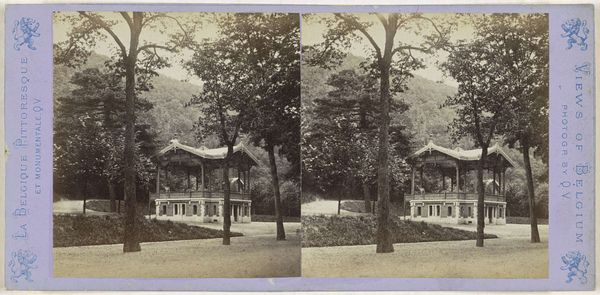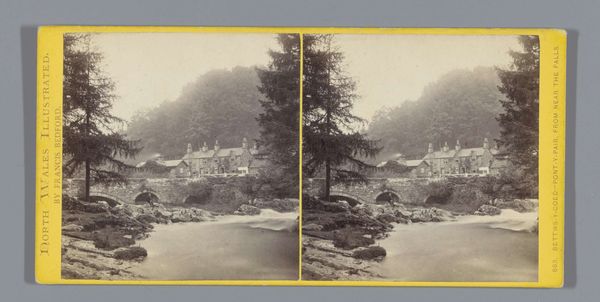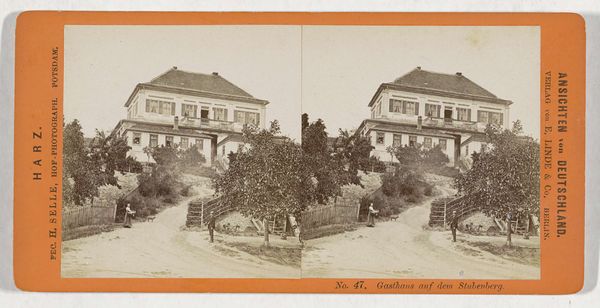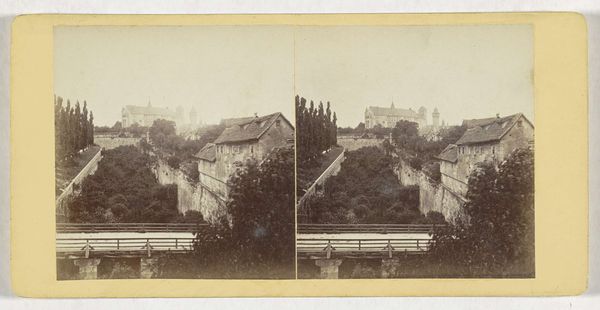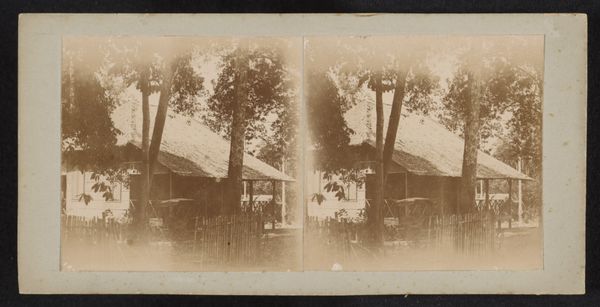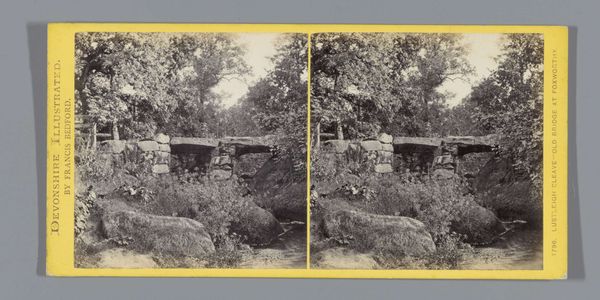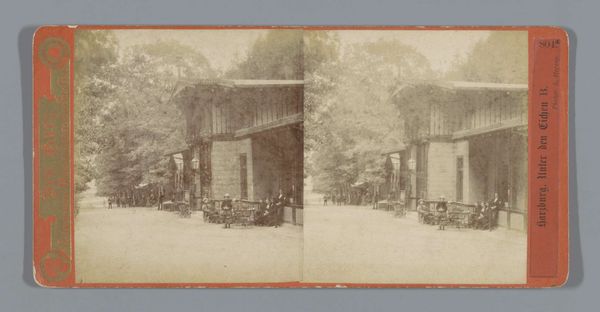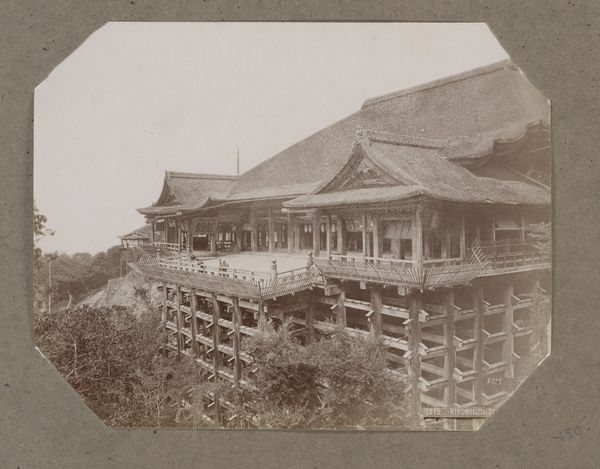
Gezicht op het kurhaus en het casino in Chaudfontaine 1866 - 1870
0:00
0:00
print, photography
# print
#
landscape
#
photography
#
realism
Dimensions: height 87 mm, width 174 mm
Copyright: Rijks Museum: Open Domain
Curator: Looking at this photograph, titled "Gezicht op het kurhaus en het casino in Chaudfontaine," taken between 1866 and 1870, I'm struck by its atmosphere. There’s something haunting about it. Editor: Haunting is a good word! It feels like a ghost of a place, veiled and half-hidden in the vegetation. I immediately thought of the layers of history and class struggle that are typically associated with leisure spaces. Curator: The composition definitely emphasizes a kind of "picturesque" quality. You have this built environment encroached upon, even overwhelmed, by nature. It makes you wonder about the tension between culture and nature in the 19th century. Editor: Precisely! The way the photographer, Jules Hippolyte Qu\u00e9val, positions the Kurhaus feels deliberate. It is as if the building, intended for enjoyment and perhaps decadence, is struggling to maintain its position against the organic forces around it. It raises questions: Who had access to these spaces? What sort of social and economic realities made such leisure possible? Curator: The almost ghostly effect of the image further amplifies that. It’s interesting to consider the Kurhaus as a symbol. They were designed as places of health and rejuvenation. You also see an intersection between wellness, leisure, and social status. Editor: And those spaces weren't accessible to everyone, were they? Looking at it now, I think about those who labored to create and maintain these "wellness" sanctuaries, those excluded from the purported healing. There is that aspect of leisure. Curator: Absolutely. There's a moral question implied in this very subdued landscape. Does "wellness" always require someone else’s discomfort? Editor: I find this idea that the pursuit of leisure and well-being often comes at a social cost to be a vital component of it all. How do the symbols and narratives created by artwork, particularly in the Victorian era, affect cultural memory today? This image prompts me to think more carefully about the ethical underpinnings of recreation itself. Curator: I agree, examining an artwork such as this through the lens of leisure helps to understand it and allows for thoughtful discourse and a greater exploration into what it truly encompasses. Editor: Right! When we engage critically with history and its representations, we equip ourselves to comprehend present-day inequities better and, maybe, work to develop something equitable.
Comments
No comments
Be the first to comment and join the conversation on the ultimate creative platform.
